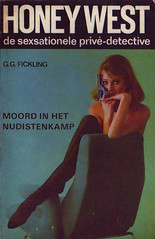Synchronicity and Drs. P
https://www.youtube.com/watch?v=ygvkZ35Z0-0
We zijn hier aan de oever van een machtige rivier
De andere oever is daarginds, en deze hier is hier
De oever waar we niet zijn noemen wij de overkant
Die wordt dan deze kant zodra we daar zijn aangeland
En dit heet dan de overkant, onthoudt u dat dus goed
Want dit is van belang als u oversteken moet
Dat zou nog best eens kunnen, want er is hier veel verkeer
En daarom vaar ik steeds maar vice versa heen en weer
English rough translation, see untranslatability
We are here at the shore of a mighty river
The other shore is over there, and this one is over here
The shore where we are not is called the other side
Which will become this side as soon as we land there
And this then we call the other side, please remember well
This is important if you want to cross
And that is very possible, there’s lots of traffic here
And that is why I cross the river vice versa “to and fro”
When I was 23, I spent six months with my wife in Shanghai at Fudan University. Among the numerous great things that happened when I was there was meeting André.
André was one of a kind and we hit it off immediately. He had I believe only just finished high school and was 18 or 19 at the time. He was smart and creative, had theories on dancing (“when I dance, it’s all in the face”) and one on synchronicity which has stayed with me all this time. He was convinced that there was a Chinese equivalent to every American actor, and was thus constantly on the look-out for the Chinese Woody Allen.
Whether he found him or not, I don’t know, and – sadly – I also lost track of André. My wife and I were supposed to stay in Shanghai for a year but we left after six months, just before the Tank Man incident. I was young and when André and I parted ways I did not exchange addresses with him, thinking that if I was supposed to meet him again it would surely happen.
You probably ask yourself, what does this have to do with the Youtube clip above by Drs. P? Well, every country has a couple of artists, musicians or writers which are one-of-a-kind (sui generis). Drs. P is one of those people, he is a genius and cannot be compared to anyone within the Dutchophone area of Europe I live in.
However, I am convinced that every country in the world has its Drs. P. There must be one in Spain, New Zealand or the United States. Drs. P.’s sensibilities (word play, absurdism, playful narrativity, humor) must be synchronously present in every country in the world.
The question is for you dear reader, who is your country’s Drs. P. Or who is your country’s Woody Allen?






